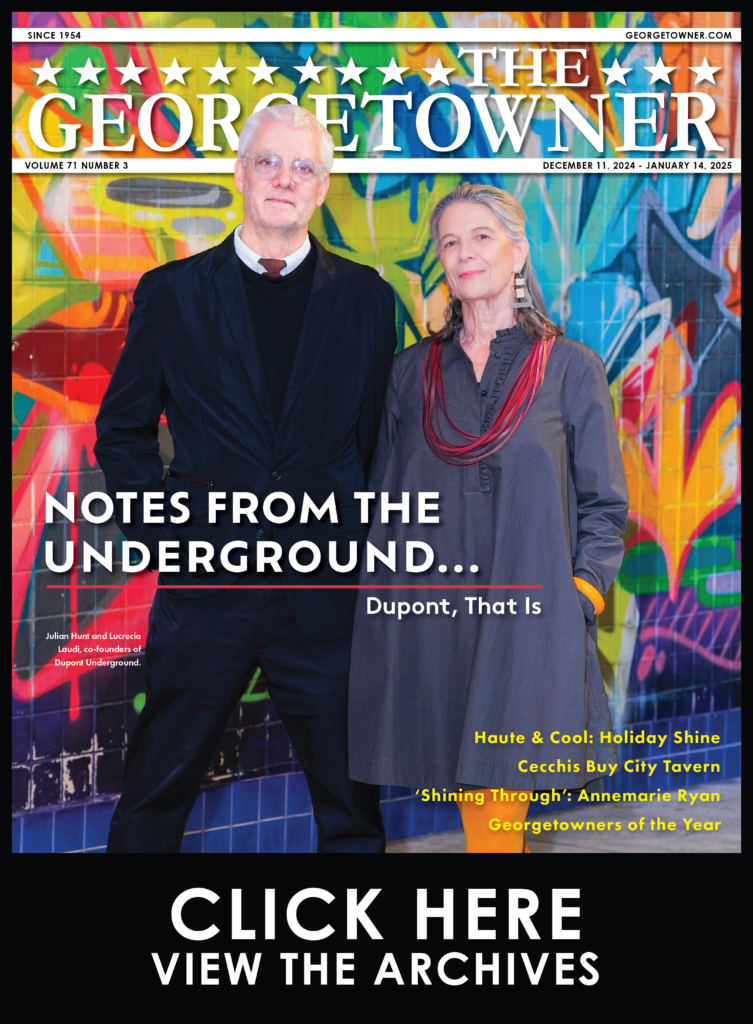Timely Notifications Can Prevent Panic
By • April 18, 2018 0 496
Last week, The Georgetowner received a panicked email. “The Georgetown Waterfront Park is under attack! A large drilling rig and truck have been installed in a fenced area in a grassy area of the park. That is not acceptable!”
The Georgetowner immediately went to investigate. There it was. A truck with a single drilling rig, tightly fenced in with some metal coverings on the grass in the park between 33rd and Water Streets.
There were no signs. The email did mention that DC Water “had obtained a permit” to drill. But for what? Why? For how long? How extensive? Where else?
“We weren’t notified,” said Joe Gibbons, who chairs Georgetown’s advisory neighborhood commission. “We give all agencies at our meetings the chance to update us. But they didn’t.”
“Neighbor notifications technically are required under D.C. law,” wrote Advisory Neighborhood Commissioner Jim Wilcox. All of Georgetown is a designated historic district. Every construction project must give public notification and be reviewed by the Old Georgetown Board. Notification placards should be posted two weeks before the review.
But the Waterfront Park is a National Park. The rules are different.
Turns out the drilling was a mandated test of soil and rock elements for the clean water and runoff tunnel project. Eighteen holes needed to be bored in Waterfront Park by April 13. A professional turf restoration company was scheduled the week after to repair any damage. Neighbors were notified by email, according to DC Water.
But emails are not enough. They can do harm and sow mistrust.
For instance, on an early morning last September, several longtime residents of the 3200 block of O Street found parking tickets on their cars on the street where they had parked for years. The area had suddenly become a temporary (for two years?) school bus zone for children from Hyde-Addison Elementary while it is under construction. DDOT had posted new parking signs a few days before. DC Public Schools officials had sent out emails on Saturday. But no notifications were hung on doorknobs to be sure that immediate neighbors knew; they had to pay fines.
A small sign on the fence at the Waterfront Park, briefly describing the who, what, where, why and when, would not only have satisfied curious journalists and park fans. It would also have helped soothe the nerves of an increasingly jumpy citizenry, which sees collusion everywhere.

